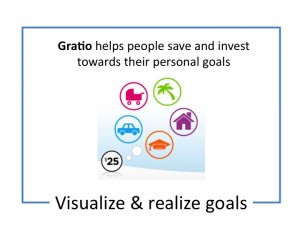This is the first in a series of posts inspired by CFSI’s Underbanked Financial Services Forum. At the conference, attendees were asked to complete the sentence, “in the future, the underbanked marketplace will…” on a square button.
I was struck by the power of goals and how different financial products are starting to incorporate this power to create value for companies and their customers.
 Sears discussed their Christmas Card – a very old-fashioned idea with a new face. Back in the day, lower income people would put a little money away every month in anticipation of Christmas directly from their paycheck. Sears launched a prepaid card last season that allows for contributions to be made online or in the store so that you actually have money to spend when the Holidays hit, now that credit is limited. Good for Sears, good for you.
Sears discussed their Christmas Card – a very old-fashioned idea with a new face. Back in the day, lower income people would put a little money away every month in anticipation of Christmas directly from their paycheck. Sears launched a prepaid card last season that allows for contributions to be made online or in the store so that you actually have money to spend when the Holidays hit, now that credit is limited. Good for Sears, good for you.
 US Bank announced a new savings program where they will give you a boost if you meet certain savings goals. It’s called START and the bank will give savers $50 for reaching $1000 in savings and another $50 for keeping it a year. They found that these thresholds are important and aligned with people’s goals: greater savings and longer saving.
US Bank announced a new savings program where they will give you a boost if you meet certain savings goals. It’s called START and the bank will give savers $50 for reaching $1000 in savings and another $50 for keeping it a year. They found that these thresholds are important and aligned with people’s goals: greater savings and longer saving.
Two startups even name their products with “goal” in the word: GoalMine and DebtGoal. Guess what they help you do. Not the catchiest names, but clearly tapping into important goals in today’s world: investing and getting out of debt.
What each of these programs have in common is to give little nudges to our internal capacity for setting goals. They can’t do the work for us, but they can provide a gold star, or clear steps, or encouragement along the process. The more I think about it, this is a superior approach to upstaging our internal goal setting abilities altogether by raising the threshold of external motivators (say, by the threat of punishment or loss).
